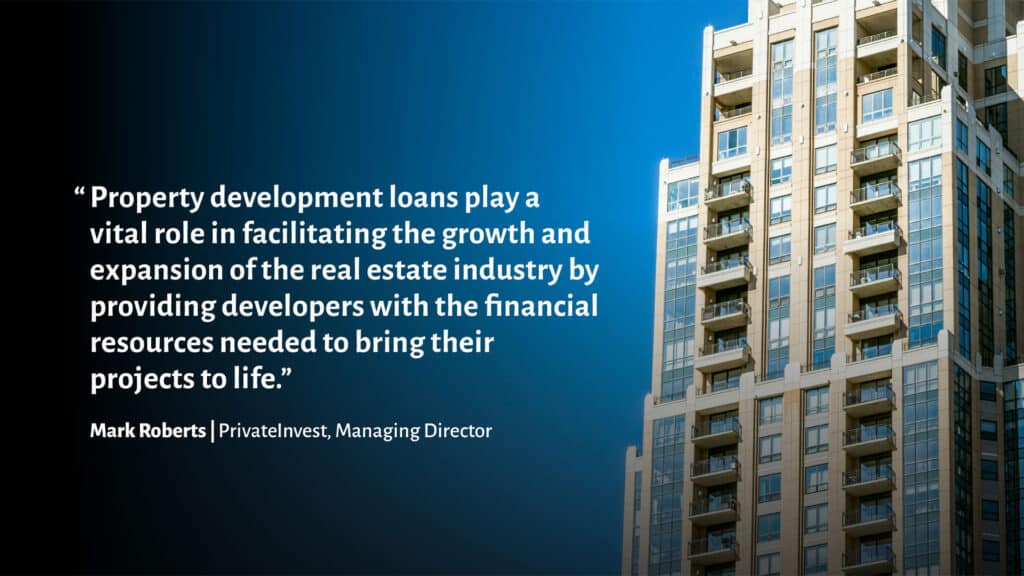Demystifying Property Development Loans: How do they Work?
Property Development Loans can be a lucrative venture, whether you're building residential housing, commercial complexes, or mixed-use developments.
However, the upfront costs and financial requirements involved in Property Development can be substantial, often requiring significant capital investment. This is where Property Development loans come into play, providing developers with the funding needed to purchase land, finance construction, and ultimately bring their projects to fruition. Let’s delve into the intricacies of Property Development Loans and explore how they work.
Understanding Property Development Loans
Property Development Loans, also known as Development Finance or Construction Loans, specialise in financing for developers undertaking construction projects. Unlike Traditional Mortgages or Commercial Loans, lenders design these loans specifically to address the unique challenges of Property Development.

The Loan Process
- Application and Due Diligence: The first step to obtaining a Property Development Loan involves submitting a loan application to a lender specialising in development finance. The lender then conducts thorough due diligence. For example, assessing the developer’s experience, the project’s feasibility, the location of the property, and the profitability of the development.
- Loan Structuring: Once the lender approves the loan application, they collaborate with the developer to structure the loan terms. This includes, the loan amount, interest rate, repayment schedule, and any associated fees or charges. Property development loans typically feature interest-only terms during the construction phase, with the principal repaid upon project completion or through permanent financing.
- Valuation and Security: The lender also performs a valuation of the property to determine its current value and assesses the level of security. Depending on the loan-to-value ratio and risk profile of the project, the lender may require additional security. This includes, collateral, other assets or in the form of personal guarantees.
- Drawdowns and Disbursements: After loan approval and commencement of construction, the lender disburses funds periodically, or makes drawdowns, to finance the development process. These drawdowns typically align with pre-agreed completion stages, including land acquisition, site preparation, foundation work, and completion of construction phases.
- Monitoring and Inspections: Throughout the construction period, the lender closely monitors project progress and conducts regular site inspections. This ensures that funds are used as intended and that the development progresses according to schedule and budget.
- Completion and Transition: Upon finishing the construction phase, the Property Development loan typically transitions into a long-term financing arrangement. This arrangement could be a commercial mortgage or refinancing package. This allows the developer to repay the outstanding loan balance and secure permanent financing for the completed property.
Key Considerations
- Risk Management: Lenders must carefully assess and mitigate the higher levels of risk inherent in Property Development loans compared to standard mortgages. This involves conducting comprehensive feasibility studies, analysing risks, and planning contingencies. This helps to address uncertainties related to construction projects, market fluctuations, and regulatory factors.
- Experience and Track Record: Lenders are more inclined to finance Property Development Projects led by experienced developers with a proven track record of success. Developers with a solid reputation, industry expertise, and strong financial standing are better positioned to secure favourable financing arrangements.
- Exit Strategy: Developers seeking property development loans must have a viable exit strategy. This includes demonstrating a clear plan for repaying the loan and realising project profitability upon completion through pre-sales, leasing agreements, or refinancing options.
- Collaboration and Communication: Effective communication and collaboration among developers, lenders, contractors, and other stakeholders are essential for property development project success. Open dialogue, transparency, and proactive problem-solving can help mitigate challenges, address issues promptly, and ensure the smooth execution of the project.
Conclusion
Property development loans play a vital role in facilitating the growth and expansion of the commercial real estate industry. These loans provide developers with the financial resources needed to bring their projects to life. By understanding the loan process, key considerations, and risk factors associated, developers can navigate the complexities of the lending landscape. This allows them to effectively maximise the potential success of their projects. As with any form of financing, careful planning, due diligence, and strategic decision-making are essential for achieving positive outcomes and realising the full potential of property development opportunities.

About PrivateInvest
PrivateInvest is a funds manager and non bank lender in the Australian property sector, providing a suite of bespoke financial services to investors and borrowers.
Wholesale Investors rely on PrivateInvest to deliver above average risk adjusted returns in the commercial real estate debt market. We achieve this through equity, mezzanine debt, preferred equity, and hybrid debt instruments.
Qualified borrowers in the middle market segment access capital from PrivateInvest for tailored property financing. PrivateInvest provides support and personalised solutions that borrowers “can bank on”.
Share your thoughts on Demystifying Property Development Loans: How do they Work? via your social channels with the button below.